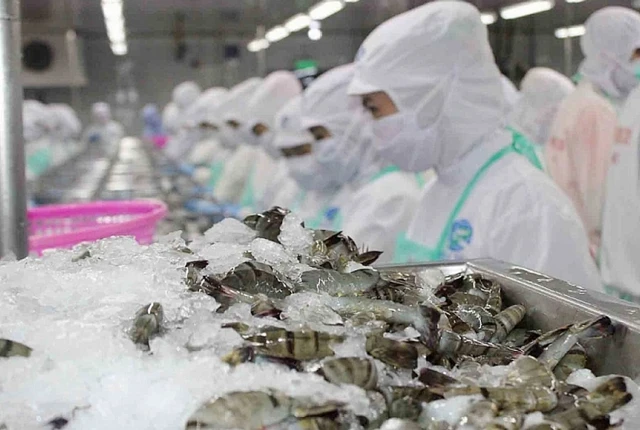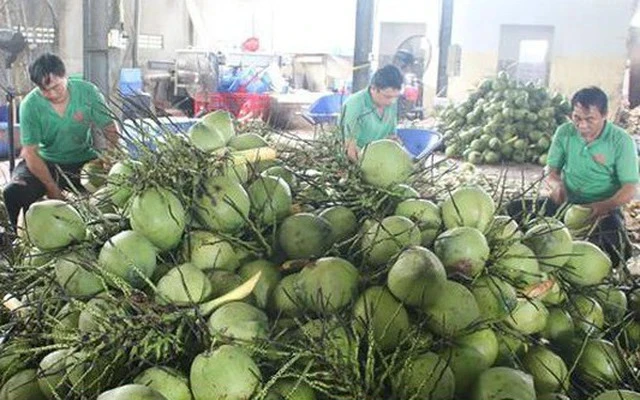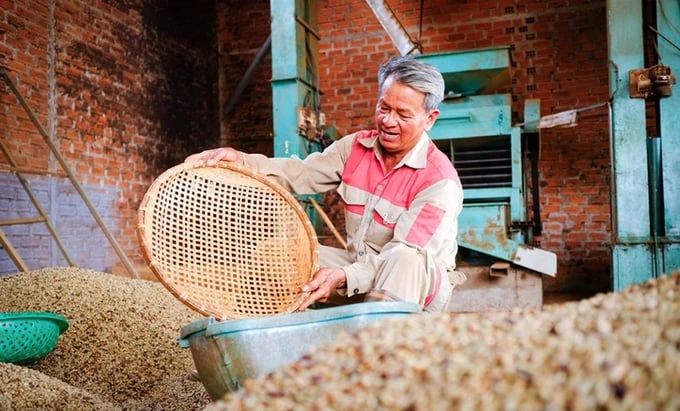
By Vietnam Expo On 04-09-2024 at 4:30 am
CPTPP boosts Vietnam’s seafood exports to Australia
Steady increase in market share
The CPTPP took effect for Vietnam in early 2019. In 2018, Australia was the ninth largest export market for Vietnamese seafood. However, after five years of CPTPP implementation, Australia has become the fifth largest single market for Vietnamese seafood, after the US, Japan, China, and the Republic of Korea (RoK).
According to Nguyen Thi Thu Sac, President of the Vietnam Association of Seafood Exporters and Producers (VASEP), Vietnamese seafood exports to Australia have grown continuously from US$197 million in 2018 to a peak of US$365 million in 2022. However, they decreased to US$312 million in 2023 amid a global downturn.
In the first half of 2024, among CPTPP nations, Australia was the second largest import market of Vietnamese seafood, accounting for 3.6 percent of the total export value. Major exports to this market included shrimp, tra fish, and other types of marine fish. Shrimp made up 72 percent of the total seafood export value to Australia, tra fish accounted for over 12 percent, with the remaining share consisting of items, such as barramundi, squid, mackerel, and grouper.
Vietnam is currently the second largest seafood supplier to Australia, accounting for 19.8 percent of the volume and 21 percent of the value of Australia’s total seafood imports in 2023. Vietnamese shrimp represents over 70 percent of Australia’s total shrimp import value, while Vietnamese tra fish accounts for nearly 100 percent of Australia’s total import value for this kind of seafood.
Australia is also a seafood supplier for Vietnamese companies, mostly rock lobster, with annual import volume of about 40,000 tonnes.
Focusing on high-quality products
According to Phung Thi Kim Thu, a shrimp market expert from VASEP, despite its advantages, Australia has stringent technical barriers, labeling requirements, and food safety standards, some of which are even higher than those of the US and the EU. Therefore, to effectively exploit the Australian market, Vietnam needs to enhance quality control in farming areas, improve the registration and certification system for farming and processing zones, and continue negotiating to open the market further for agricultural and seafood exports to Australia.
Thu noted that the geographical distance results in high logistics costs and long transportation time, which poses a challenge for Vietnamese seafood exporters to this market. Therefore, domestic companies should be proactive in market exploration and development, and have long-term business plans to boost exports to Australia.
To boost seafood exports to Australia, the Vietnamese Trade Office in Australia recommended that domestic companies pay greater attention to Australia’s specific standards and regulations. Specifically, seafood exports to this market must meet requirements for labeling and comply with the biosecurity regulations outlined in the Biosecurity Act 2015.
Seafood products must also meet food safety requirements under the Imported Food Control Act 1992 and the Australia-New Zealand Food Standards Code.
Government agencies and local authorities should support businesses in building and implementing sustainable development strategies, diversifying supply sources, and collaborating to reduce costs and meet rules of origin. They should also focus on building, developing, and controlling the quality of farming areas; improving the registration and evaluation of farming areas, packaging, preliminary processing, and processing facilities; and promoting digital transformation in agricultural production and trade.
Businesses must take the initiative in market exploration and development, improve product quality, and meet strict requirements of importers. They should focus on increasing processed products and enhancing the quality of seafood products for export to Australia.
The Ministry of Industry and Trade will collaborate with relevant agencies to introduce major Australian corporations that can transfer advanced agricultural technologies suitable for Vietnam’s practical needs, such as processing technology, by-product reuse technology, and breeding technology. They will support domestic businesses’ direct participation in Australia’s wholesale and retail distribution networks, helping increase the presence of Vietnamese agricultural products in this market.
The Vietnamese Trade Office in Australia stated that it will continue to support Vietnamese businesses in exploring the conditions and assessing the potential of trade in agricultural, forestry, and seafood products in the Australian market. The Trade Office will also update businesses on new Australian policies, regulations, and guidelines concerning imported agricultural products.
At the same time, the Trade Office will provide businesses with guidance and recommendations on market access solutions, as well as precautions to help them avoid trade fraud when doing business in Australia.

Author
Vietnam Expo
Related posts






